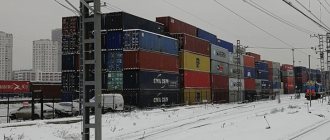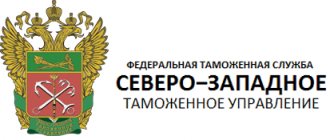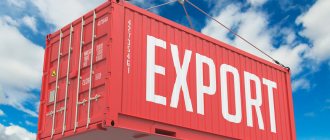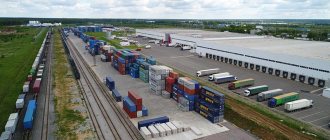Since the dawn of 2001, after the disaster in America, almost all countries of the world have done everything possible to strengthen security at airports. Sea ports and land checkpoints at the borders did not go unnoticed. A large number of cars and containers with cargo pass through them every day. Attackers can use them to transport drugs, weapons, and contraband. Inspecting cargo manually is a long and expensive process that requires the recruitment of enormous human resources. It is for this reason that inspection is used only in the most recent and complex cases, when there are serious concerns or suspicions about the cargo. To facilitate the work of the customs service and improve the quality of inspection, special tools were made. One of them is the inspection and inspection complex (IDC).
What is IDC?
IDK is a special technical means for customs control, which is used for inspection of all types of vehicles and large-sized cargo. In just 5 minutes, without opening the container and unloading the vehicle, the inspection and inspection complex displays an image on the screen that indicates what is in the center of the object being inspected and provides a full description and properties.
Thanks to the complex, it is possible to identify transported cargo, detect items that are prohibited for transportation, and make a rough estimate of the amount of cargo being transported.
customs inspection
Based on the risk profile, the inspector orders an inspection. In other words, the cargo is inspected because the inspector sees a requirement in the customs program to inspect such cargo. Risk profile factors are established in the central department of the Federal Customs Service and are not disclosed.
Another reason may be a previous weighing or data request in which disputed data appeared.
Inspection - checking the cargo and opening it. Inspectors can weigh, measure goods, and photograph label data. All technical means that inspectors use during control are described in Order of the Ministry of Finance dated March 1, 2019 No. 33n.
Creation Story
The creation of an inspection and inspection complex is a compulsory measure aimed at solving the problems posed to the customs service. By the way, these problems were posed back in the late 80s of the twentieth century. Back in Russian times, a resolution was adopted “On measures to develop and organize the production of technical means of customs control, ensuring its effectiveness, reliability and quality.” The goal was to make the cargo inspection system at customs efficient and organized.
In the Russian Federation, the introduction of inspection and inspection complexes of customs services began in 2002. The experimental complex was introduced at the Brusnichnoe customs crossing, which is located on the border with Finland. Then a mobile version developed by the German company Smiths Heimann was put into operation. After another 3 years, a similar complex was put into operation at the Troebornoye crossing on the border with Ukraine, and later they began to be intensively installed at checkpoints with high traffic volumes for truck cargo.
Types of IDK
Now, thanks to the active development of technology, several modifications of inspection and inspection systems have emerged, such as:
- stationary;
- easily erected;
- mobile;
- for monitoring railway cars;
- for control of aviation containers.
Basic systematization of inspection and inspection complexes by type of radiation:
- equipped with an X-ray source;
- equipped with a gamma radiation source.
According to radiation energy they are:
- with low energy level up to 300 kOe;
- average level up to 2.5 Me;
- the highest energy level above 4 Me.
Each system has its own specific purpose and capacity. To understand where and how they are used, it is necessary to consider the properties of each individually.
Easily erectable IDK
They are significantly inferior to stationary complexes in terms of their own penetrating ability. They allow you to obtain information about the approval of the cargo, which is indicated in the accompanying documents, and make it possible to identify up to 85% of the contents of containers. These systems are used on trucks, their capacity is up to 20 cars per hour.
Equipment of this type can be located in prefabricated structures or concrete modules with lightweight radiation protection.
Mobile IDK
The mobile inspection and inspection complex is installed on a special vehicle chassis and requires the allocation of a special sanitary zone. It allows you to obtain information about the presence of cargo in the container and identifies the contents for compliance with the accompanying documents.
Basically they work with small large planes. Throughput is about 20 objects per hour. Used by operational units of customs services. In order for the mobile complex to work perfectly and provide very truthful information, it must be installed on a level area on which it will move freely relative to the inspection object.
Technological value of grain
A natural feature of a grain crop is the ability to produce a given type of flour through the use of various processing methods. Flour milling quality is determined by the lowest energy consumption when processing grain with the highest yield of finished products. This indicator is assessed in accordance with the following criteria:
- commodity output;
- quality of the raw materials obtained;
- time spent on the grinding process;
- energy consumption.
To produce high-quality bread using the most common dough making technologies - this ability is directly related to the gas-forming phenomenon.
Other types of IDK
In addition, inspection and inspection systems were released for customs services, which allow you to inspect railway cars without opening them. They help to see the image of all loaded cars on the display and make it possible to identify products, components and assemblies of the cars.
Systems have been created that allow high-quality inspection of aircraft containers. They allow you to image only one hundred percent of the loaded container and help identify products.
How the IDK works
The stationary inspection and inspection complex uses ionizing rays for inspection, thanks to which it is possible to obtain an X-ray image and conduct a high-quality analysis of the vehicle and cargo (even the largest).
The rays get inside the object, so there is no need to open the container shell. The rays return in the form of a shadow image to the monitor screen. In the most common language, X-ray radiation directed from the source passes through a translucent object, object, protective glass and is visually perceived by the operator as a shadow image.
If a shadow image passes through a special fluorescent screen, it is transformed into a light relief and causes a glow. In this case, the operator accepts it as a luminous shadow image.
To summarize, we can say that the mechanism of operation of the inspection and inspection complex is based on the property of an X-ray beam to obtain a shadow image of an object pierced through it and cause it to glow with the help of fluoroid materials.
How to use IDK
IDK should be used as shorthand for "I don't know" in texting and instant messaging to express uncertainty when trying to answer a question or when trying to describe something unknown.
Here are some correct ways to use IDK in text:
- IDK what that means.
- IDK about it.
- I have to pick up some bread, but I don't know if the store is already open.
If you're feeling more confident, saying IDK out loud to a group of friends will cause a lot of laughter and embarrassment (just don't do it in public unless you have any shame).
Its meaning and semantics have remained the same, but over time several variations have appeared.
IDK device
Almost all types of inspection and inspection complexes consist of the following main systems:
- radiating;
- processing and registration of acquired data;
- moving the inspected object;
- processing the acquired image, managing the acquired data and ensuring its secure storage;
- ensuring interaction with other information systems, software complexes of the UAIS of customs control;
- providing remote viewing of purchased data;
- control;
- transportation;
- safety from radiation radiation;
- electronic power.
All systems are included in the complex and work harmoniously, so the information that comes to the monitor is very reliable and is stored in memory for a certain amount of time.
Main tasks of IDK
The use of an inspection and inspection complex at customs checkpoints makes it possible to solve a lot of difficult problems:
- increase the volume and level of reliability of information received on the monitor during customs inspection;
- accelerate the volume of product turnover through checkpoints at the Russian border;
- significantly reduce the time for clearance of goods undergoing customs control, etc.;
- high-quality verification of the compliance of all information about the cargo indicated in the accompanying documents;
- increasing customs duties to the country's budget;
- increasing the efficiency of identifying illegal goods, such as weapons, drugs and contraband, which are transported in violation of existing legislation.
Thanks to inspection and inspection complexes in the Russian Federation, in recent years the time required to complete customs checks (especially large-sized cargo) has significantly decreased, and the number of illegal goods imported into the country has decreased.
Points of use and tasks that IDK solves
Customs and transport inspection points
. The equipment is used to search for drugs, weapons, prohibited items, and check the compliance of the contents of the invoice during inspection of automobile, railway and water transport at customs inspection points.
Regime objects.
At nuclear power plants, military bases, energy enterprises and other sensitive facilities, X-ray equipment is included in the security system.
Industrial enterprises.
Production uses IDK to control received raw materials, shipped garbage, scrap metal, and marketable products. The main goal is to check the composition and quality of raw materials and prevent theft.
Processing plants
. The installations help analyze the composition of recyclable materials, detect foreign inclusions and potentially dangerous objects.
Advantages of using IDK at customs
After customs checkpoints were equipped with the most modern technology, such as IDK, going through customs not only became less painful - the ability to inspect large-sized cargo became better. Thanks to the implementation of the IDK, customs points received a lot of advantages:
- managed to achieve the highest speed of train inspection;
- the throughput capacity of the complexes is the highest, it can be compared with the equivalent of steel, 460 mm wide;
- it is possible to obtain a radioscopic image of the controlled object of the highest quality;
- The time for checking cargo is reduced by a couple of times;
- the highest quality of identifiable material;
- there is no need to open the container in order to specifically check it for the presence of illegal cargo and compare the objects with the data in the accompanying documents;
- the contents of the container and the list indicated in the documents are automatically checked;
- the highest efficiency in detecting illegal cargo;
- the ability to work with the system remotely, automatically;
- implementation of equipment in all weather conditions.
Thanks to all these advantages, mobile inspection and inspection complexes and any other types of systems are intensively used and continue to be implemented at all customs checkpoints of the Russian Federation and other countries.
Application of inspection and inspection systems
- Railway transport. Portal technology scans trains at speeds of up to 15-30 km/h. The equipment automatically turns off the emitter or reduces power when a locomotive passes.
- Sea and river transport. Portals scan the cargo from above. The object moves under its own power or using a towing device.
- Trucks and cars. The equipment can operate in portal mode, move on rails or guides, or use a built-in conveyor to move vehicles.
Results of the work of the IDK at customs points of the Russian Federation
IDK is a rather financially expensive technique. Currently, there are 5 stationary systems and more than 40 mobile systems operating on the Russian borders. Over the past six months, thanks to the use of similar systems, it was possible to inspect more than 2 thousand vehicles and identify more than 500 offenders who tried to bring illegal cargo across the border.
The cost of the first complex costs on average about 100 million rubles, but as the test results demonstrate, they justify this cost because they allow you to quickly recognize even perfectly camouflaged cargo, for example, hidden under the floor or covered with steel. In the near future, the number of complexes will be increased at all customs points in order to reduce the time of cargo inspection and improve the performance of customs services.
Classification
Optimal care and regular fertilization make it possible to achieve a high content of protein elements in gluten, which determines its quality. IDK of wheat grain is a set of physiological properties (extensibility, viscosity level, ability to maintain physical characteristics over a certain period of time). Quantitative and qualitative indicators are standardized by standards. The IDC indicator should be the percentages presented below and, depending on them, wheat is divided into classes.
| Class | Quantitative indicator of gluten | Gluten quality |
| 1 | 36% | Group I |
| 2 | 28-32% | Group II |
| 3 | 23-27% | III group |
| 4 | 18-22% | IV group |
| 5 | Not limited | Group V |








